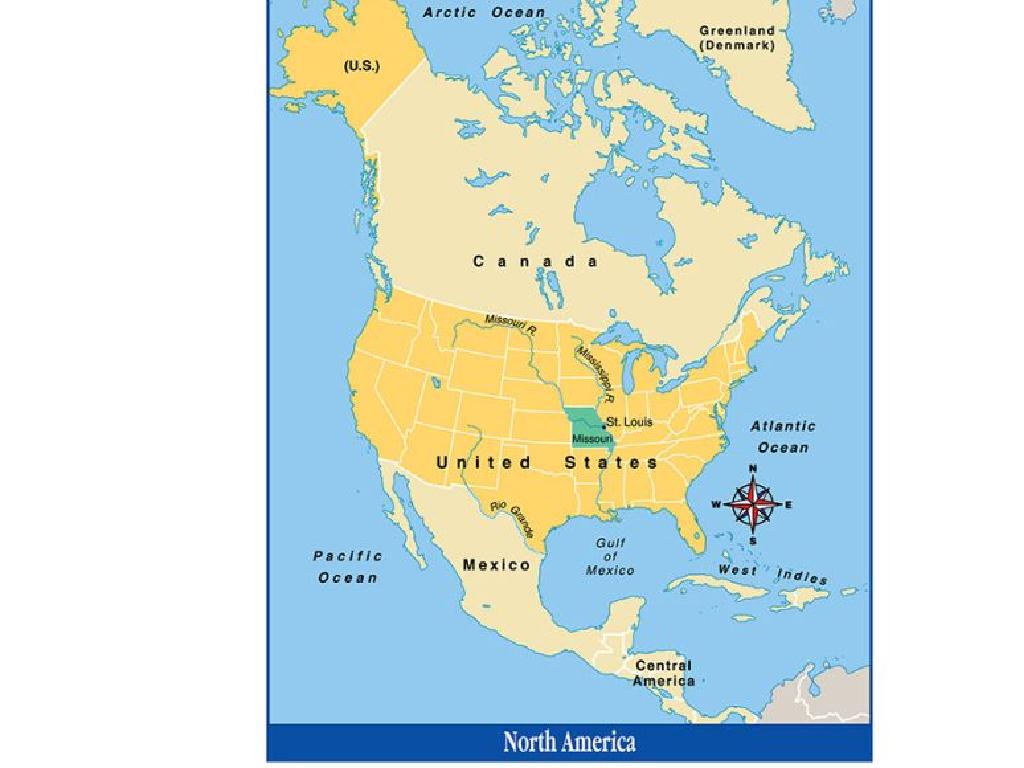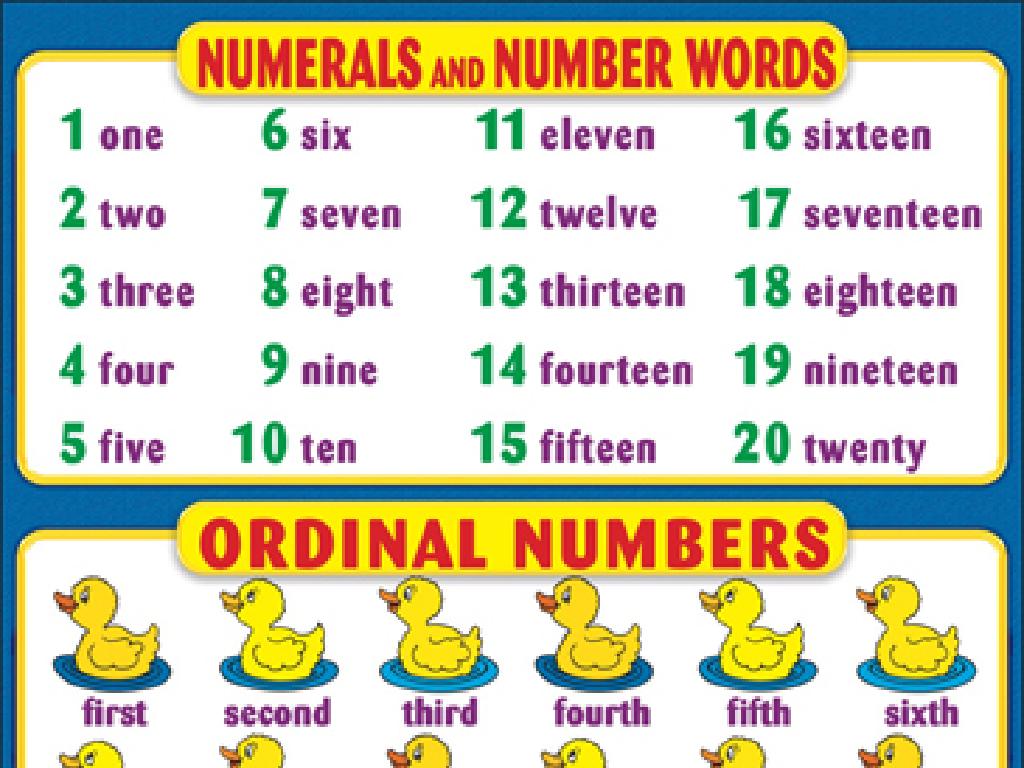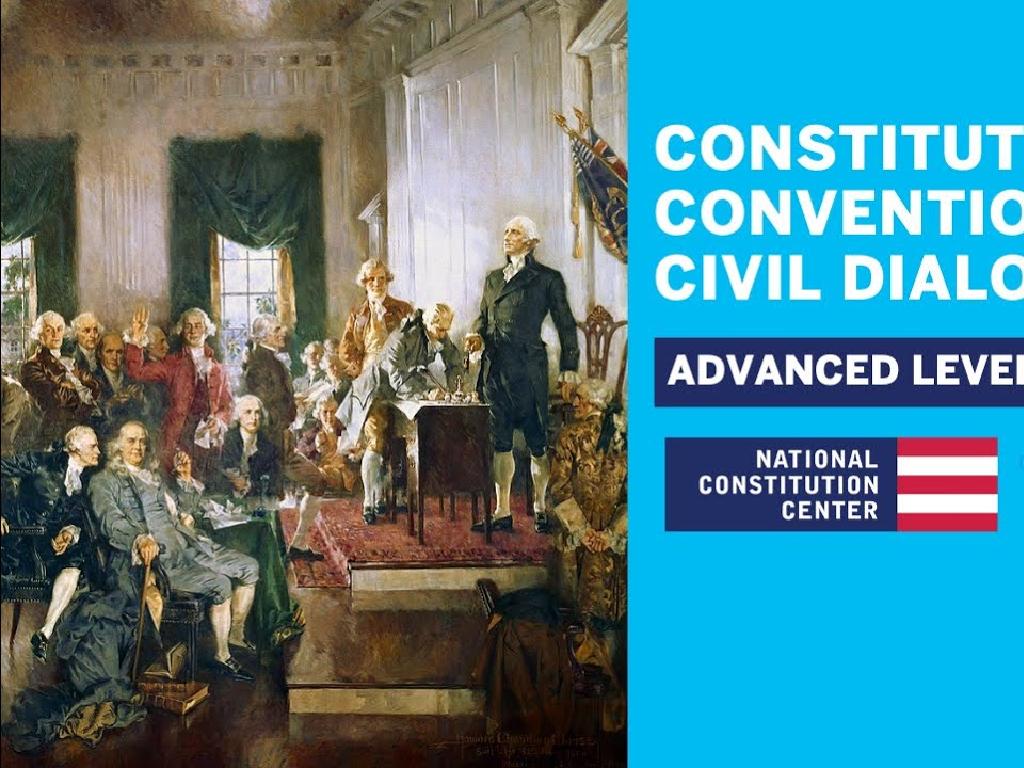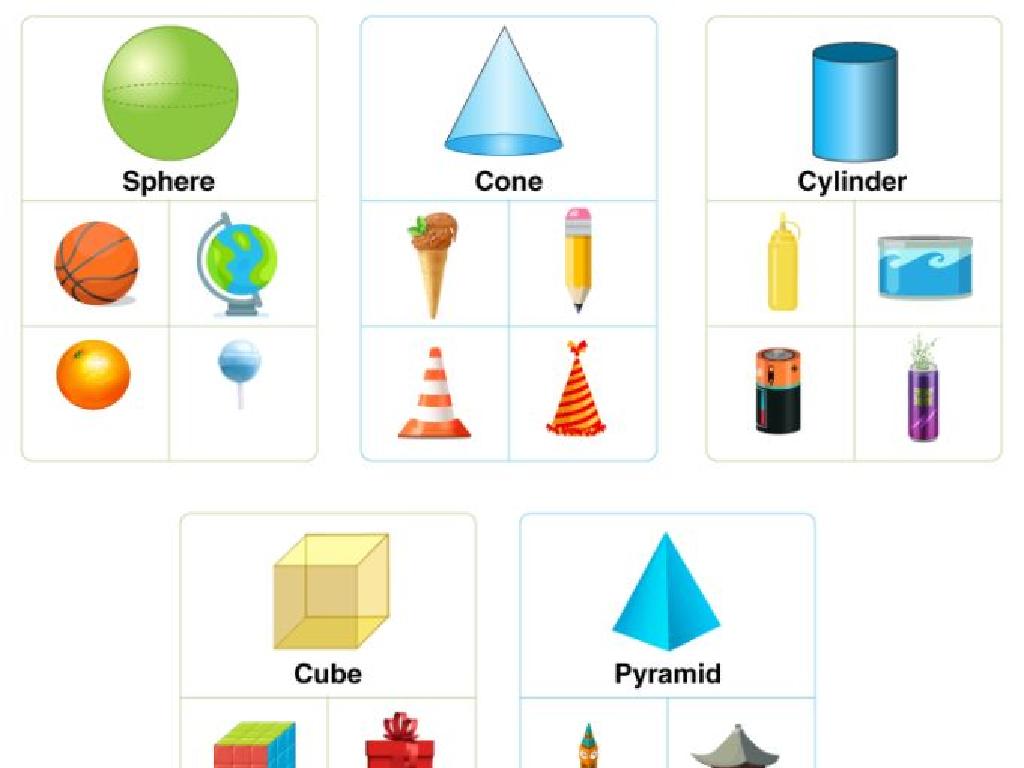New England Colonies: Religion And Government
Subject: Social studies
Grade: Fourth grade
Topic: English Colonies In North America
Please LOG IN to download the presentation. Access is available to registered users only.
View More Content
Exploring New England Colonies: Religion and Government
– Religion’s role in New England
– Pilgrims and Puritans sought religious freedom, influencing daily life and laws.
– Government in early colonies
– Town meetings and self-governance were early forms of democracy.
– Society shaped by beliefs
– Religious beliefs led to community rules and social norms.
– Comparing then and now
|
This slide introduces students to the significant impact of religion and government on the New England colonies. Emphasize that the Pilgrims and Puritans came to America seeking religious freedom, which greatly influenced the way they set up their communities and laws. Discuss how town meetings allowed colonists to have a say in their governance, laying the groundwork for American democracy. Highlight how the colonists’ religious beliefs were deeply intertwined with their daily lives, affecting social norms and community expectations. Encourage students to think about how these historical foundations compare to the role of religion and government in their lives today.
Exploring the New England Colonies
– Identify the New England Colonies
– The colonies include Massachusetts, Connecticut, Rhode Island, and New Hampshire
– Understand geography and climate
– Harsh winters, rocky soil, and coastal benefits shaped life
– Learn about colony founding
– Plymouth was founded for religious freedom, Massachusetts Bay for trade and faith
– Key figures in colony establishment
|
This slide introduces students to the New England Colonies, focusing on their identification, geography, climate, and founding. Emphasize the role of geography in the settlers’ daily lives and economy, such as fishing and shipbuilding due to the proximity to the ocean. Discuss the reasons for founding Plymouth and Massachusetts Bay, highlighting the Pilgrims and Puritans’ search for a place to practice their religion freely. Introduce students to key historical figures like William Bradford and John Winthrop. Encourage students to think about how the geography and climate could affect their own lives if they lived during that time.
Pilgrims and Puritans: Journey to Self-Government
– Who were the Pilgrims and Puritans?
– Pilgrims and Puritans were English settlers seeking religious freedom.
– Their religious beliefs
– Believed in a simpler form of worship, separate from the Church of England.
– Journey to America
– Sailed across the Atlantic to settle in New England for religious freedom.
– The Mayflower Compact
– First self-government agreement in America, made by the Pilgrims in 1620.
|
This slide introduces the Pilgrims and Puritans, two groups of English settlers who played a pivotal role in the history of the New England colonies. They sought to practice their religion freely and chose to leave England for America. The Pilgrims, specifically, made a significant contribution to the development of self-government through the Mayflower Compact, an agreement that established a basic form of democracy among the settlers. This document laid the groundwork for future governance in the colonies. Encourage students to think about how these early settlers’ search for religious freedom and self-governance has influenced the principles of American democracy today.
Religion in New England Colonies
– Religion’s role in daily life
– Church gatherings were central to community life.
– Puritan beliefs shaped laws
– Puritans had strict rules influencing moral and legal codes.
– Church and state were intertwined
– Unlike today, religious leaders often held government positions.
– Impact on community governance
|
In this slide, we explore the significant influence of religion on the New England colonies. Religion was not just a private matter; it was deeply integrated into the daily lives of the colonists. The Puritans, who were seeking religious freedom, had a profound impact on the laws and moral codes of the colonies. Their beliefs were strict and they aimed to create a society based on their religious ideals. The church was so influential that it was often difficult to separate religious authority from political power, with many religious leaders also holding government positions. This interconnectedness of church and state affected all aspects of governance and community life in the New England colonies. Encourage students to think about how this might compare to the separation of church and state that we have today.
Government in the New England Colonies
– Town meetings: democracy begins
– Citizens discussed and voted on issues.
– Local governments form
– Small regions created their own rules.
– Laws keep colonies orderly
– Rules helped maintain peace and fairness.
– Democracy shapes society
|
This slide introduces students to the early forms of democracy and government in the New England colonies. Town meetings were a place where colonists could speak their minds and vote directly on public issues, showcasing the beginnings of democratic action. Local governments were developed to manage community needs and were often based on common agreements. Laws were established to ensure order and fairness within the colonies. The concept of democracy was important in shaping the society and governance of the New England colonies. Encourage students to think about how these early forms of government compare to our government today and why it’s important for citizens to participate in their governance.
Daily Life in New England Colonies
– Colonists’ daily experiences
– Daily routines varied with chores, religion, and community events.
– Roles of family members
– Men worked and governed, women managed homes, children helped and learned.
– Education’s importance
– Schools were for boys to learn reading and math; girls learned at home.
– Work in the colonies
– Farming, fishing, and trading were common jobs for the New Englanders.
|
This slide aims to give students a glimpse into the everyday life of people in the New England colonies. Emphasize the strong sense of community and the role of religion in their daily lives. Discuss the distinct roles within the family unit, where men were typically the breadwinners and community leaders, women were the homemakers, and children had both household and educational responsibilities. Highlight the value placed on education, with boys attending school and girls being taught at home. Explain the types of work available, such as farming in the rocky soil, fishing along the coast, and trading goods. Encourage students to compare and contrast colonial life with their own, fostering a deeper understanding of historical lifestyles.
Then and Now: Religion and Government
– Changes in religion over time
– From Puritan strictness to various faiths
– New England’s legacy today
– Democratic ideas started in New England
– Comparing past and present government
– Colonial rules vs. our current laws
– Similarities and differences with today
– Freedom of religion and voting rights
|
This slide aims to help students understand the evolution of religion and government from the time of the New England colonies to the present day. Highlight how the Puritan religion influenced the early governance of the colonies and compare it to the religious freedom experienced today. Discuss the democratic principles that originated in New England, such as town meetings, and how they have shaped modern American government. Encourage students to think about the similarities and differences between colonial times and now, focusing on aspects like the right to vote and the separation of church and state. This comparison will give students a deeper appreciation of the historical roots of their own society.
Class Activity: Create Your Colony!
– Imagine being an early colonist
– Design your New England colony
– What buildings, jobs, and rules will you have?
– Decide on religion, laws, government
– Choose a religion and set of laws for your colony
– Present your colony to the class
– Explain why you chose your particular government structure
|
In this activity, students will apply their knowledge of the New England colonies by designing their own. They should consider the role of religion, the types of laws they would enact, and how their government would function. Encourage creativity but also ensure historical accuracy. Possible activities: 1) Drawing their colony layout, 2) Writing a ‘constitution’ for their colony, 3) Acting out a government meeting, 4) Creating a poster with their colony’s details, 5) Writing a diary entry from the perspective of a colonist. This will help students understand the complexities of colony formation and governance.






